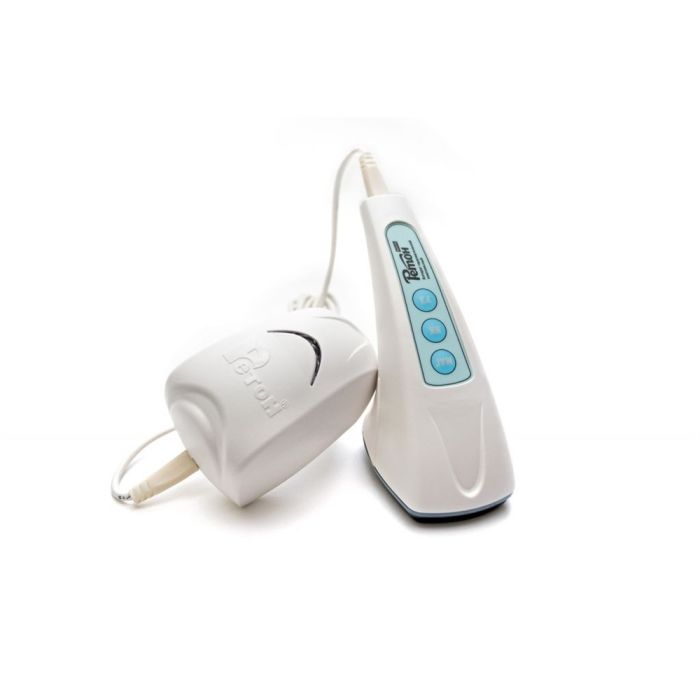Reton Forte device therapeutic complex physiotherapy
A type
Physiotherapy apparatus
Package weight, g
1000
The complex therapeutic apparatus ATK Reton Forte" has been tested in many clinics of the Russian Federation and is used both in outpatient and at home conditions, subject to the recommendations of specialists set forth in the publication, which was developed by leading physiotherapists of the Russian Federation specifically for our device (this publication is attached to each therapeutic device )
ATK "Reton Forte" has 3 independent operating modes
Magnetotherapy is the use of constant, low-frequency alternating or pulsed magnetic fields for therapeutic purposes.
In contrast to high-frequency electromagnetic fields, magnetic therapy is practically absent or minimized the thermal effects of internal tissues, which makes it possible to use it in a number of diseases that are not shown for other types of physiotherapy.
Recommended for diseases:
diseases associated with the musculoskeletal system: arthrosis, osteochondrosis, arthritis, fractures and injuries,
joint stretch marks and breaks, dislocations and bruises, as well as other ailments associated with joints, bone and cartilage tissues
diseases of the heart and cardiac vessels
diseases associated with the nervous system and pathologies of neurology
respiratory diseases: asthma, bronchitis and pneumonia
skin diseases and inflammation of the skin
diseases of the female organs
diseases of the digestive organs
venous diseases, etc.
Infrared radiation - exposure of the body to infrared radiation leads to an increase in the functional activity of molecules. Cell reproduction, enzymatic processes, and regeneration are accelerated. Infrared radiation stimulates the formation of biologically active substances in tissues (bradykinin, histamine, acetylcholine), which determine the blood flow rate. Thermoreceptors of the skin, mucous membranes, hypothalamus and spinal cord react to heat rays (reacting to an increase in the temperature of the flowing blood). Impulses from thermoreceptors along afferent pathways enter the centers of thermoregulation (hypothalamus, spinal cord), from where they return through the afferent pathways and dilate blood vessels, increase sweating, etc.The formation of heat occurring during the absorption of IR radiation energy leads to a local increase in the temperature of the irradiated skin by 1-2 В° C and causes local thermoregulatory reactions of the superficial vascular network. The vascular reaction is expressed in a short-term vasospasm (up to 30 s), and then an increase in local blood flow and an increase in the volume of blood circulating in the tissues.
Recommended for diseases:
Accelerates wound healing - cuts, burns, fractures, sprains, hematomas, bruises
Effective in relieving and relieving pain, activating metabolic processes, improving blood clotting
Inflammatory processes on the skin
Effective as a skin rejuvenator to smooth out wrinkles
Viral infections (ARI, influenza)
Inflammation of the upper respiratory tract (tonsillitis, rhinitis)
Blood pressure problems
Gynecological diseases, etc.
Ultrasound - elastic vibrations in the ultrasonic range create a high gradient of sound pressure and cause significant shear stresses in various biological tissues. Such displacements can change the conductivity of strech-channels of membranes of various cells and cause microflows of metabolites in the cytosol and organelles, carrying out micromassage. At the same time, the permeability of the plasmolemma of individual cells and histohematogenous barriers increases. The activation of membrane enzymes and depolymerization of hyaluronic acid occurring at the same time, contribute to the reduction and resorption of edema, and a decrease in the compression of nociceptor nerve conductors in the affected area. Complex physicochemical reactions occur in tissues, the viscosity of the cytosol decreases, the transition of ions and biologically active compounds to a free state.Ultrasound increases the conductivity of afferent nerve conductors and activates the reticular formation, hypothalamic-pituitary, limbic and higher centers of the parasympathetic nervous system. The restoration of the metabolism of catecholamines that occurs in this case enhances the adaptive-trophic processes in the patient's body. Subsequently, the mechanisms of nonspecific immunological resistance of the body are mobilized by increasing the binding of biologically active substances (kinins, histamine) by blood proteins and their cleavage by enzymes. Ultrasound activation of lysosomal enzymes of macrophages leads to the cleansing of the inflammatory focus from cellular detritus and pathogenic microflora in the exudative stage.The restoration of the metabolism of catecholamines that occurs in this case enhances the adaptive-trophic processes in the patient's body. Subsequently, the mechanisms of nonspecific immunological resistance of the body are mobilized by increasing the binding of biologically active substances (kinins, histamine) by blood proteins and their cleavage by enzymes. Ultrasound activation of lysosomal enzymes of macrophages leads to the cleansing of the inflammatory focus from cellular debris and pathogenic microflora in the exudative stage.The restoration of the metabolism of catecholamines that occurs in this case enhances the adaptive-trophic processes in the patient's body. Subsequently, the mechanisms of nonspecific immunological resistance of the body are mobilized by increasing the binding of biologically active substances (kinins, histamine) by blood proteins and their cleavage by enzymes. Ultrasound activation of lysosomal enzymes of macrophages leads to the cleansing of the inflammatory focus from cellular debris and pathogenic microflora in the exudative stage.Ultrasound activation of lysosomal enzymes of macrophages leads to the cleansing of the inflammatory focus from cellular debris and pathogenic microflora in the exudative stage.Ultrasound activation of lysosomal enzymes of macrophages leads to the cleansing of the inflammatory focus from cellular detritus and pathogenic microflora in the exudative stage.
Recommended for diseases:
Arthritis, arthrosis, rheumatoid arthritis, osteochondrosis, sciatica.
Diseases of the ENT organs (sinusitis, rhinitis, tonsillitis), eyes, oral cavity (periodontitis, stomatitis, periodontal disease)
Diseases of the gastrointestinal tract
Diseases and injuries of the musculoskeletal system
Inflammatory diseases of the female genital organs (adnexitis, cervical erosion)
Diseases of the cardiovascular system (ischemic heart disease, angina pectoris I-II FC, hypertension stage I-II)
Primary muscular atrophy resulting from damage to peripheral motor nerves
Trophic ulcers
Prostatitis, etc.
There are contraindications.
Before use, a specialist consultation is required.
Specifications
A type
Physiotherapy apparatus
Package weight, g
1000
"

